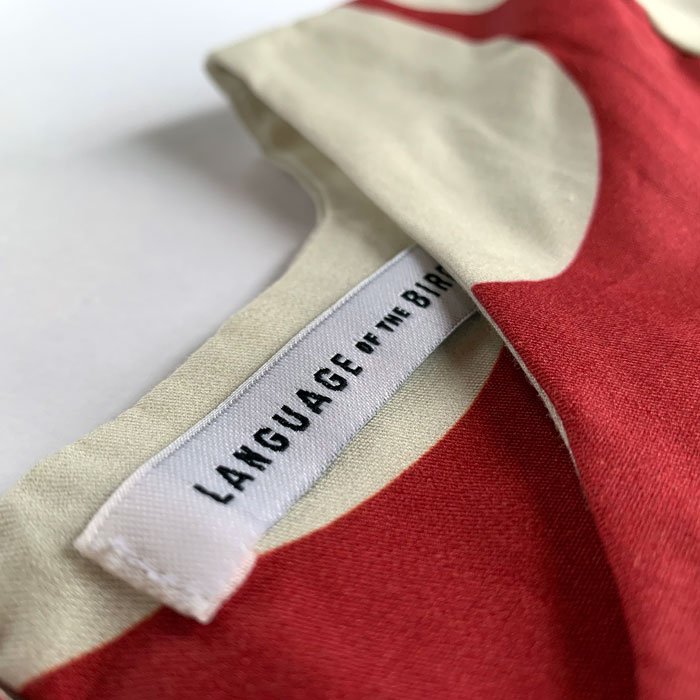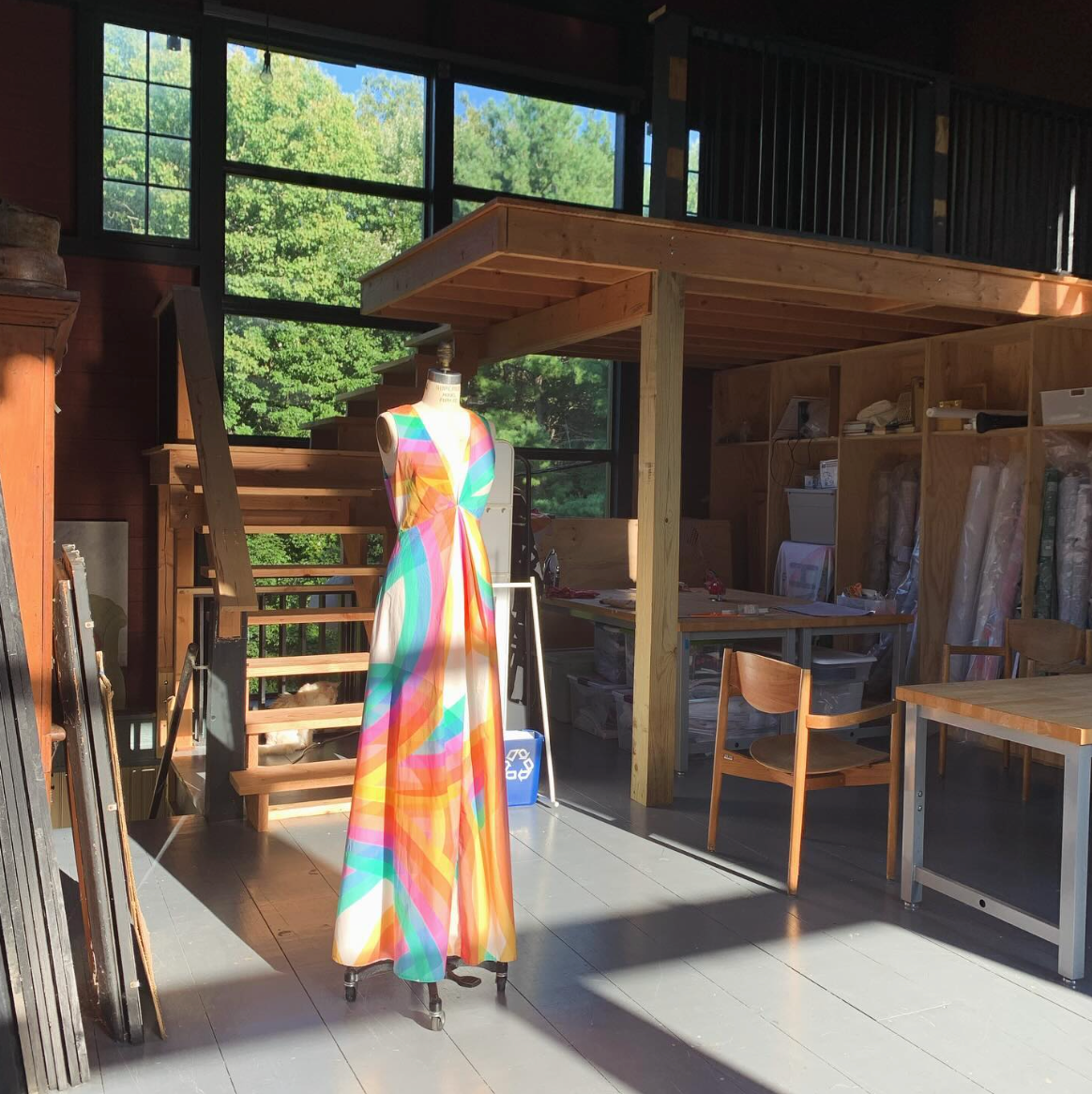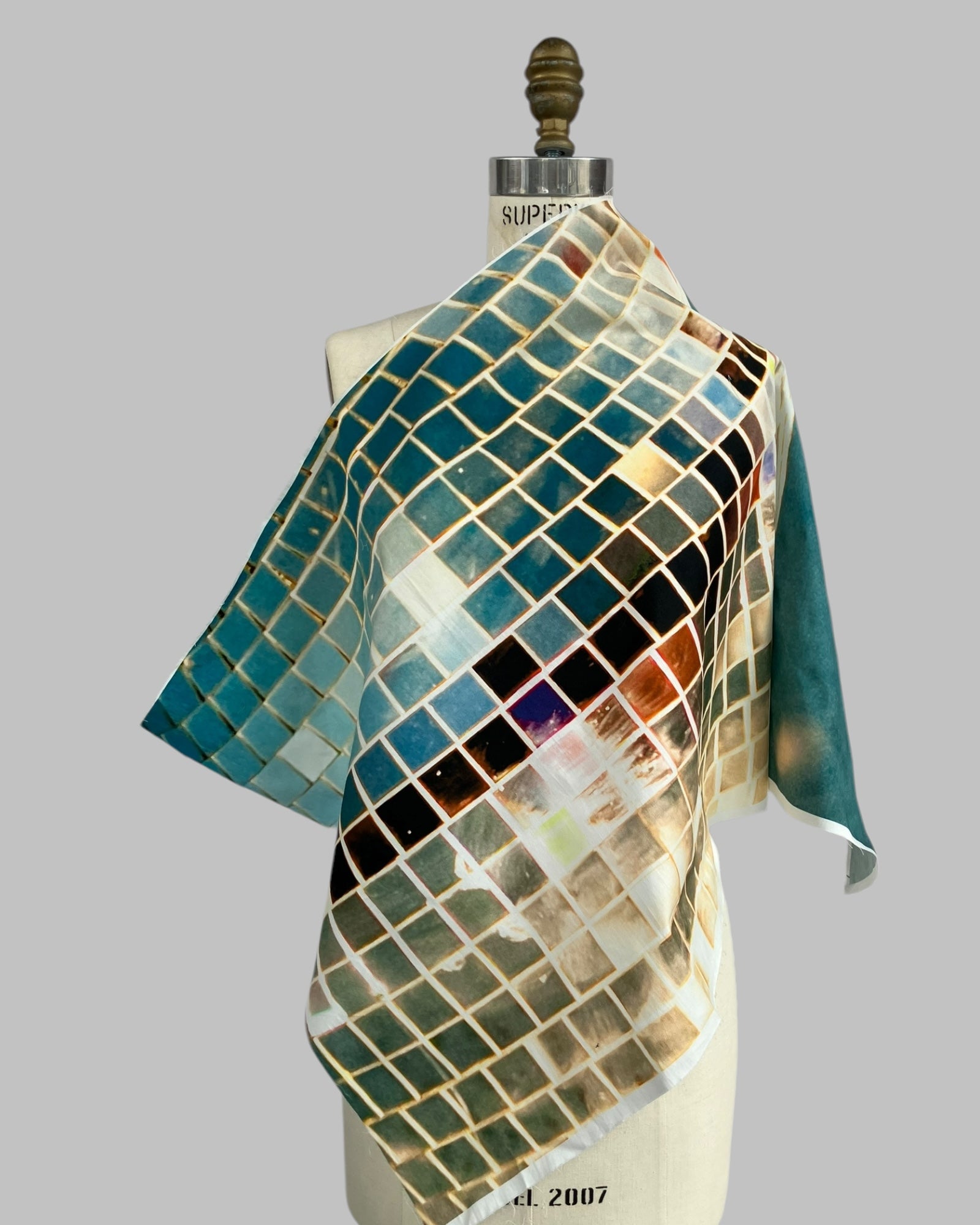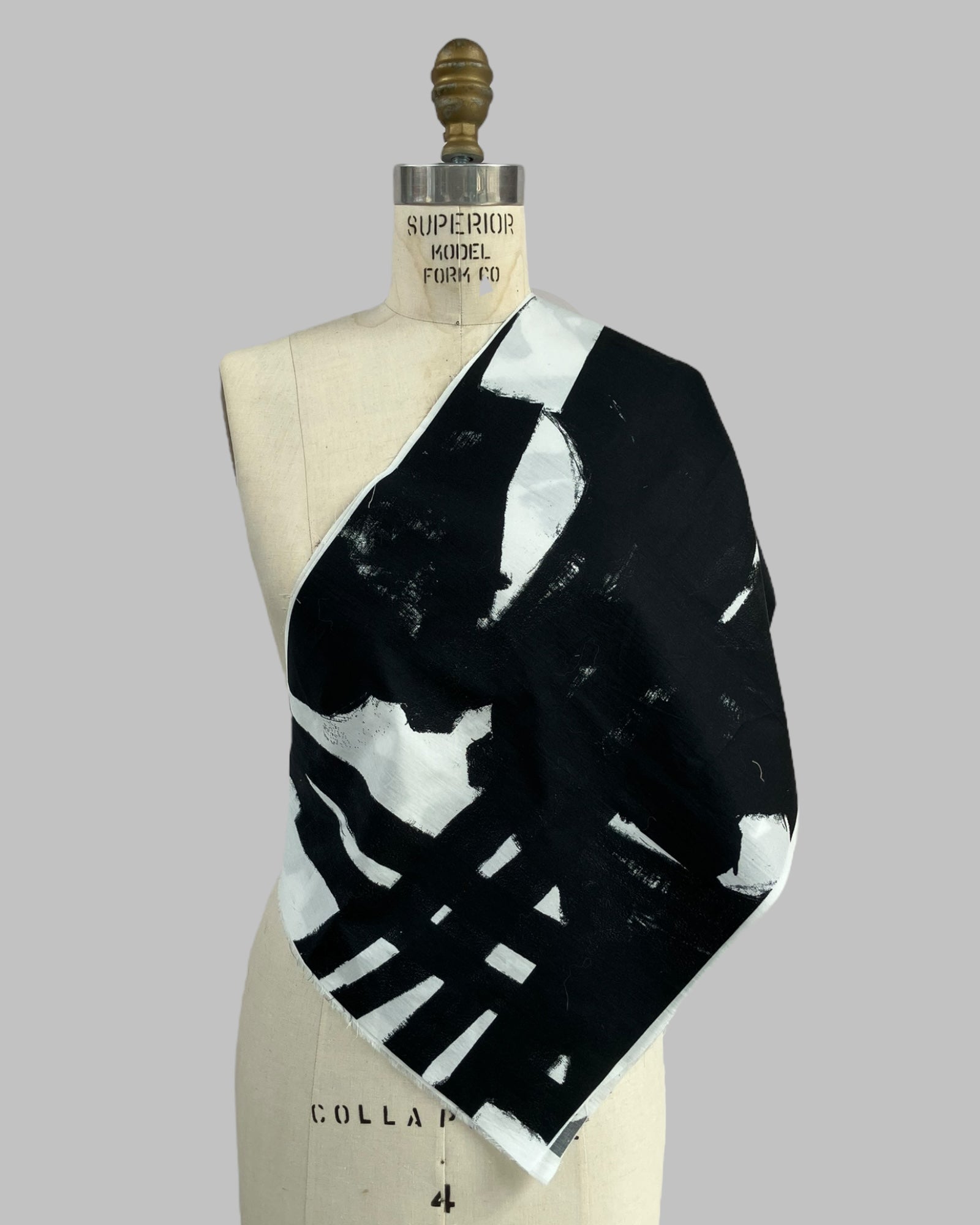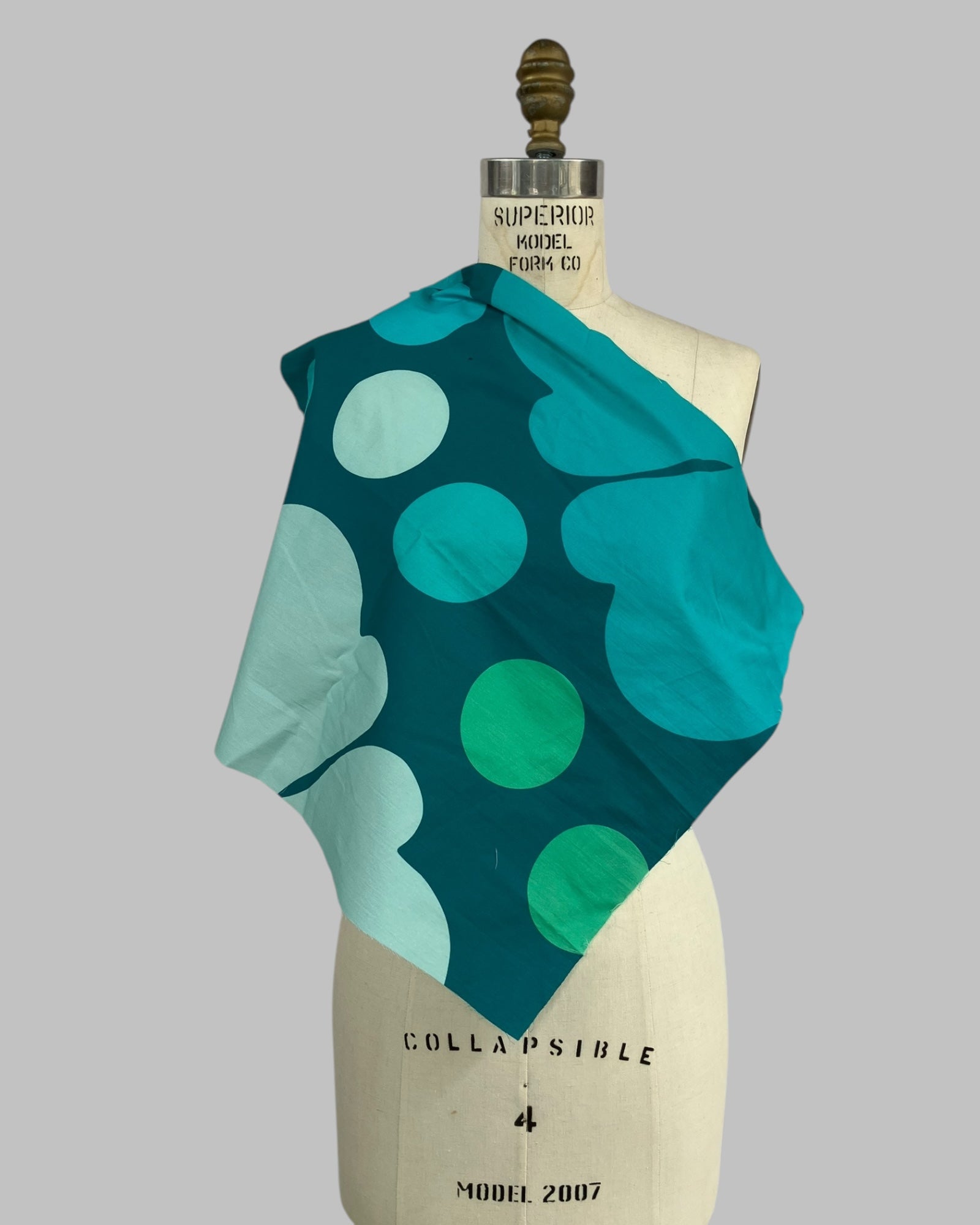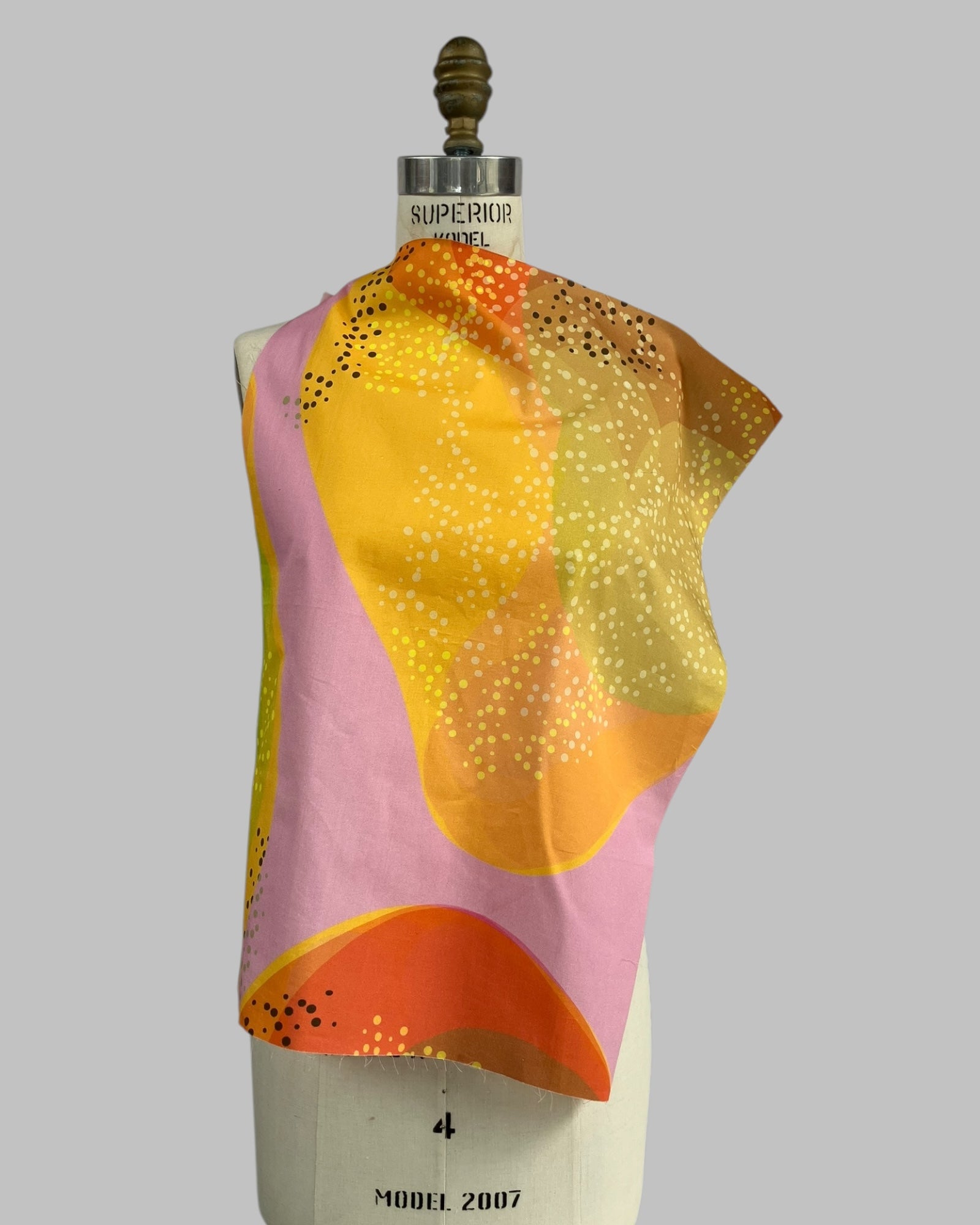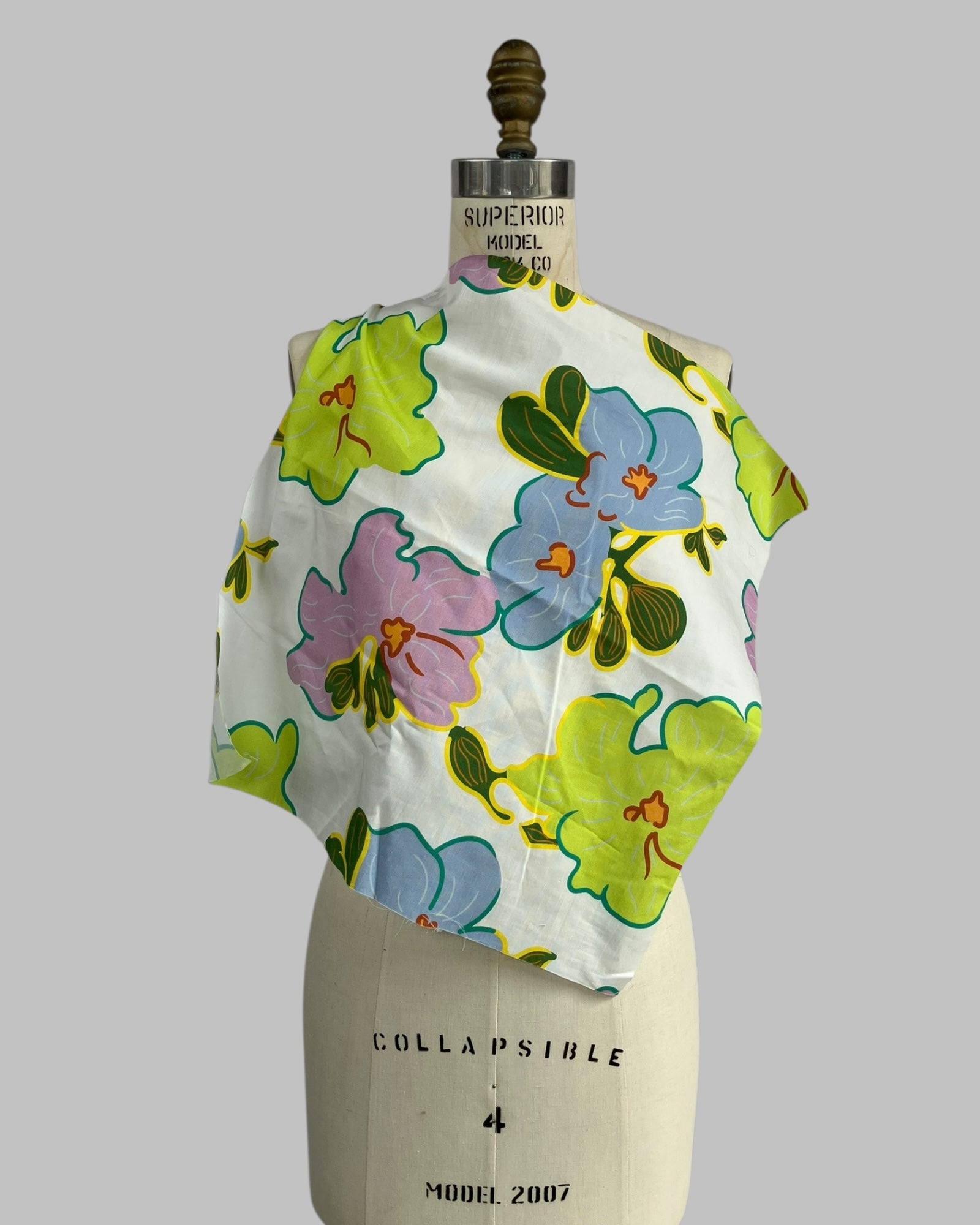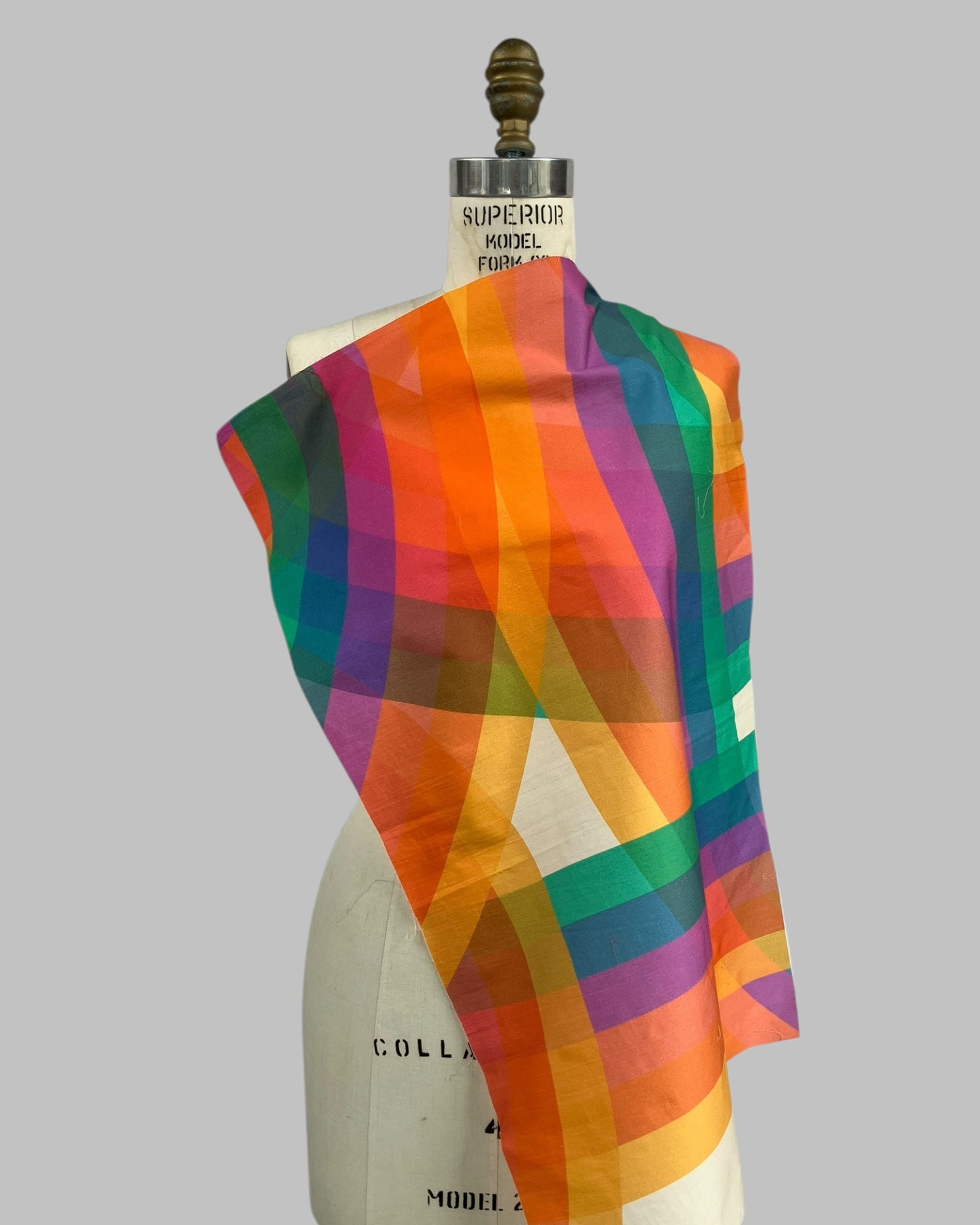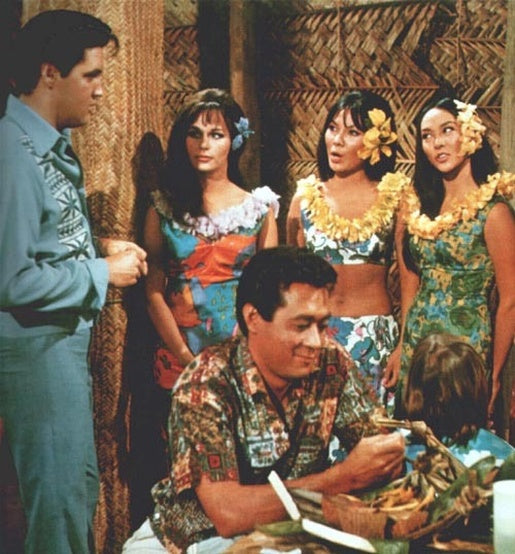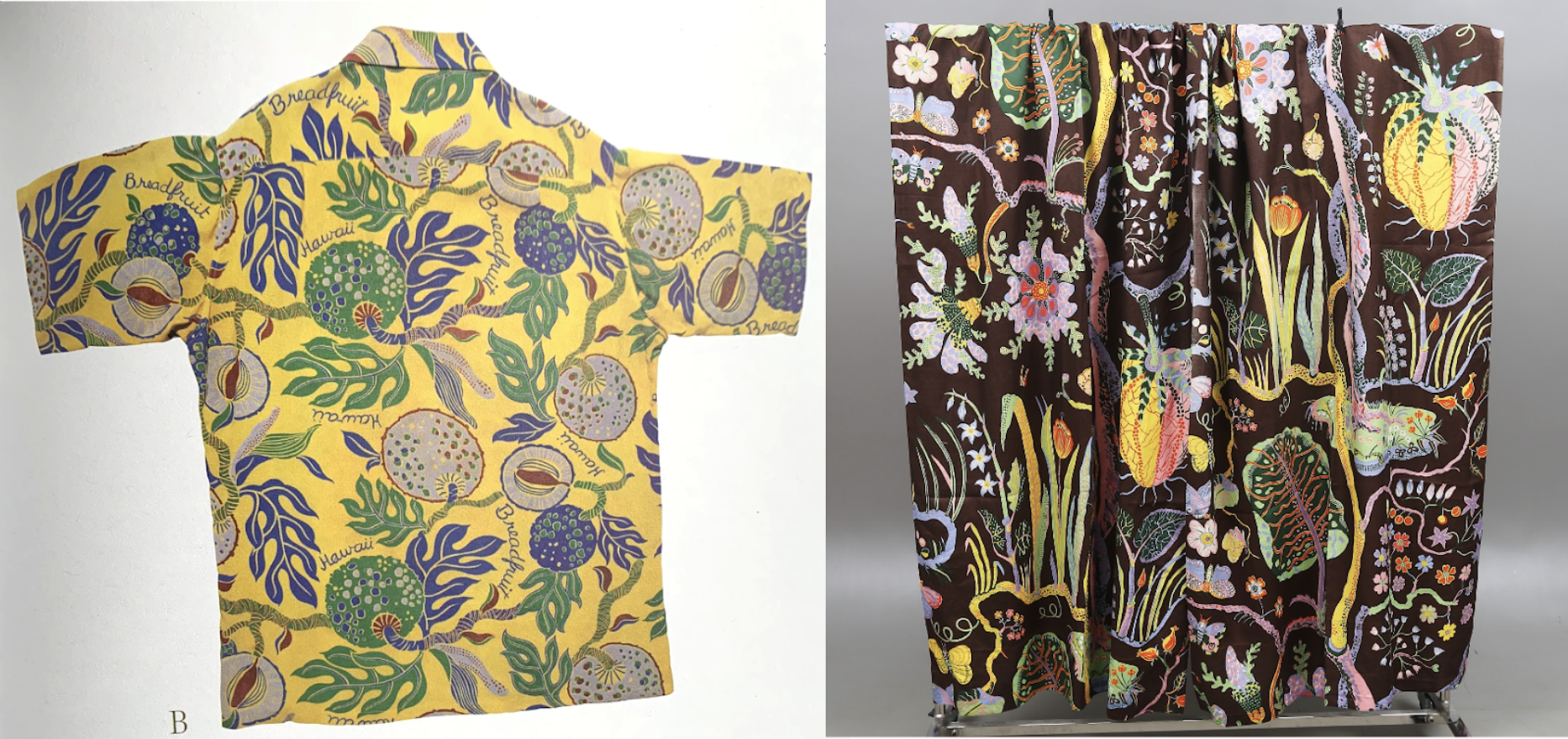why are the prints so big?
Large scale prints are integral to muʻumuʻu and all aloha wear. How did this happen? There are a lot of apocryphal origin stories. One we particularly like is that Wong’s Drapery Shoppe helped create the aloha shirt for college bound Hawaiians going to the mainland. The students needed something both warm and that felt Hawaiian. Wong’s initially used thick Japanese upholstery fabric for the warmth so the large print scale became locked in as “Hawaiian.”
These prints represent the multicultural history of Hawaiʻi. They may refer to Japanese Kimono fabrics, European chintz florals, Indian paisleys, Indonesian batiks, and traditional kapa patterns. They may be designed “authentically” by a native Hawaiian, a kamaʻāina (a local), or a transplant to the islands. The authenticity comes from the knowledge, sense, and respect of place.
Elsie Das
In the 1930s and 40s there was a concerted effort to create the modern Hawaiian print using local themes. This has been much lauded in Alfred Shaheen’s work. Also consider Elsie Das. Elsie Das was an American of Danish descent who went to art school in California. In 1950, the Honolulu Advertiser wrote “Elsie Das can lay close claim to being the originator of the aloha print.”
Her approach to print shows a sophistication and a worldliness at odds with the stereotypes about “isolated” Hawaiʻi. Compare her ulu print with the great 20th century print designer Josef Frank. The similarities indicate a deep understanding of print design and trends at the time.



